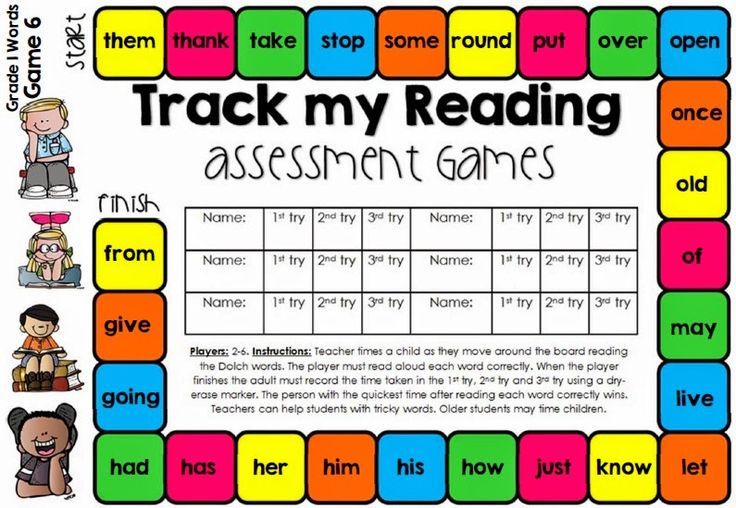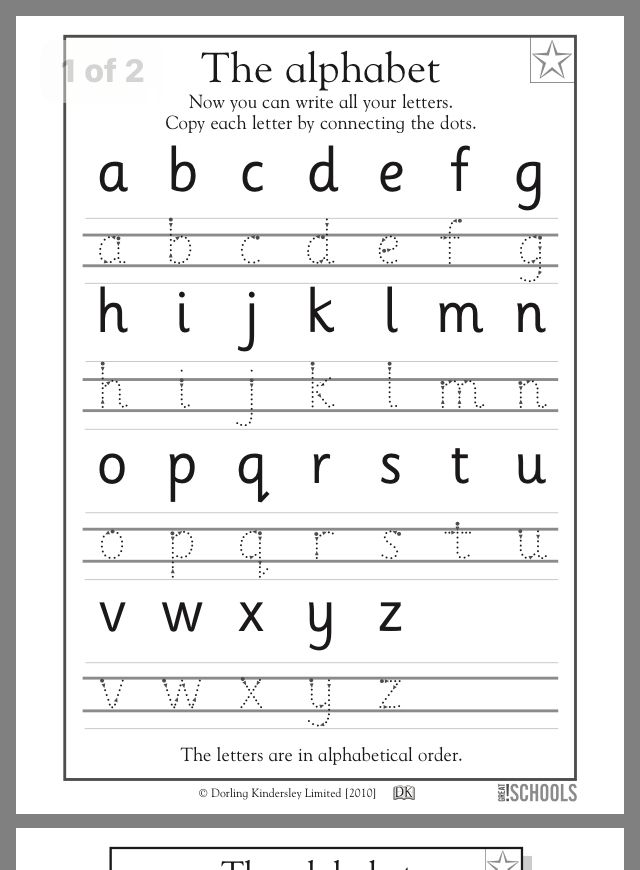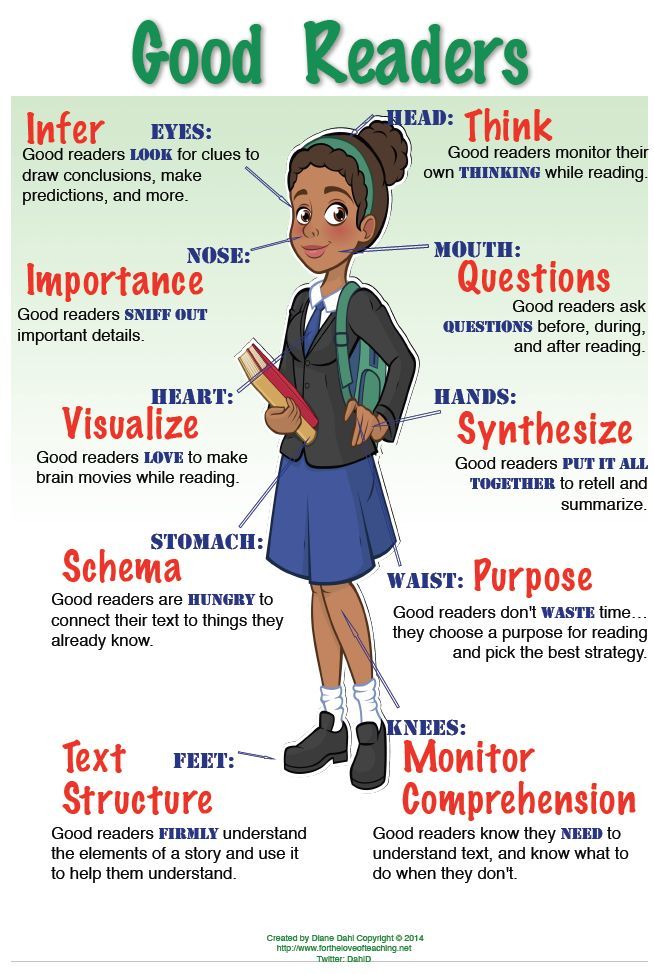Learning about prepositions
English Grammar 101 - Prepositions, Lesson 1: Prepositions and Prepositional Phrases
- Definition:
- A preposition is a word that shows the relationship between a word in the sentence and the word that is the object of the preposition.
You have just finished the Modifiers Module. You learned that adjectives tell which one, what kind, how much, and how many about a noun or pronoun. You learned that adverbs tell where, when, how, and to what extent about verbs, adjectives, and adverbs.
Sometimes the answers to those questions take more than one word. Often those phrases are prepositional phrases.
Which one: The flower in the vase is a peony.
What kind: The umbrella with the polka-dots is Mary Anne's.
Where: We will be going to the movies.
When: My lunch period is after science.![]()
How: You are walking on your tiptoes.
- Definition:
- A phrase is a group of words working together that does not have both a subject and a verb. Phrases usually act as a single part of speech. (We will get to that part later.)
Prepositions can never be alone, so it makes sense to learn about prepositions in their phrases. Any lone preposition is actually an adverb.
A preposition is a word that shows the relationship between a word in the sentence and the word that is the object of the preposition.
In the previous examples:
In shows the relationship between the flower and the vase.
With shows the relationship between the umbrella and the polka-dots.
To shows the relationship between where we are going and the movies.
After shows the relationship between our lunch and science class.
On shows the relationship between how we are walking and our
tiptoes.
- Definition:
- The object of the preposition is the noun following the preposition that the preposition is relating to something in the sentence.
In the previous examples, the objects are vase, polka-dots, movies, science class, and tiptoes.
- Hint:
-
To find the object of the preposition ask "What?" after the preposition.
The flower in the vase is a peony.
You found in - ask "In what?" Answer - vase. Try it with the other examples.
- Definition:
- A prepositional phrase is the preposition, the object of the preposition, and all the modifiers between the two.
in (preposition) the vase (object)
with (preposition) the polka-dots (object)
to (preposition) the movies
(object)
after (preposition) science class (object)
on (preposition) your tiptoes (object)
Some teachers have their students memorize a list of common prepositions. That can be confusing because sometimes those same words act as adverbs. It is better to understand how they show a relationship.
That can be confusing because sometimes those same words act as adverbs. It is better to understand how they show a relationship.
| Some Common Prepositions | |
|---|---|
| Prepositions of time: | after, around, at, before, between, during, from, on, until, at, in, from, since, for, during, within |
| Prepositions of place: | above, across, against, along, among, around, at, behind, below, beneath, beside, between, beyond, by, down, in, inside, into, near, off, on, opposite, out, over, past, through, to, toward, under, underneath |
| Prepositions of direction/movement: | at, for, on, to, in, into, onto, between |
| Prepositions of manner: | by, on, in, like, with |
| Other types of prepositions: | by, with , of, for, by, like, as |
Do you need to know what categories they fit into? Not really.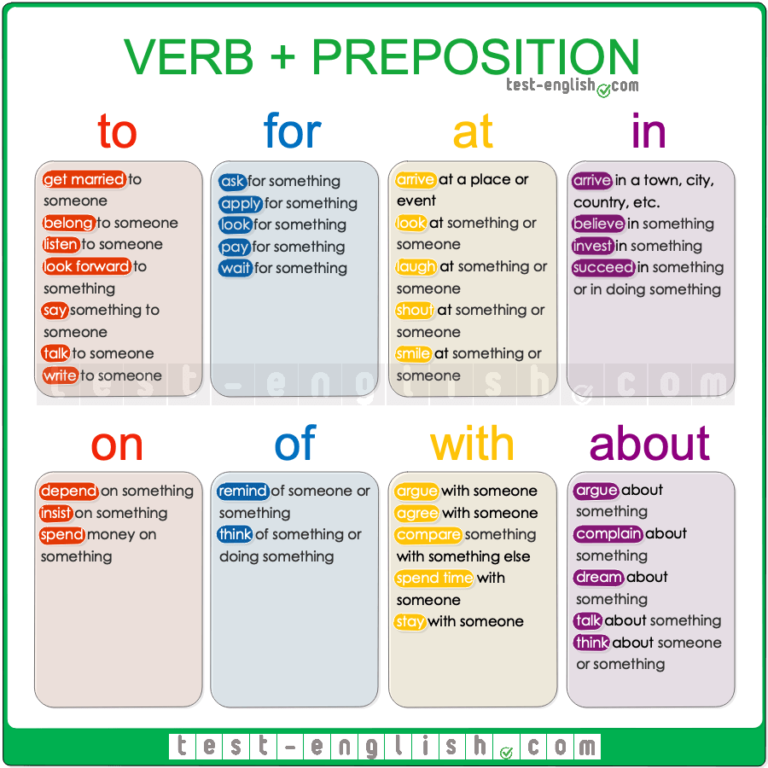 It's just a way to sort them. Remembering time, place, direction, and manner might help you remember what prepositions do.
It's just a way to sort them. Remembering time, place, direction, and manner might help you remember what prepositions do.
- Hint:
-
The word to is often a preposition, but it is just as often part of an infinitive verb. If the word after to is a verb, to is not a preposition.
Preposition: I want to go to Florida for vacation.
Infinitive Verb: I want to go to Florida for vacation.
- Hint:
-
Think of prepositions as arrows.
→ to, at, for...
← from, next to...
↔ with, between...
↑ above, on...
↓ in, inside, under, below...
- Hint:
- One of the best ways to understand prepositional phrases is to learn how to diagram sentences.
Practice What You've Learned
Exercises are reserved for account holders.
Please log in.
Need an account?
Sign up to get started.
Part 1
- Directions:
- Click on the prepositions in each sentence.
- 1.
- The cherries in that bowl are from the trees in my grandmother's garden.
- 2.
- My sister painted sheep on the walls of her bedroom.
- 3.
- Those mounds on the ground are home to meerkats.
- 4.
- Thomas and his family spend their vacations at the cabin in the woods near the lake.
- 5.
- The third car on the racetrack belongs to the cousin of my neighbor.
- 6.
- You should put the textbooks on the desks in the cabinet in the back of the room.
- 7.
- I would rather have the jeans with the dark blue wash than the jeans with the stone wash.
- 8.

- The cookies at the back of the tray were made from the fresh eggs laid by your chickens.
- 9.
- My cousins from Chicago are arriving at the airport in three hours.
- 10.
- The cars driving in the street outside my bedroom window keep me awake.
Part 2
- Directions:
- Mark the prepositional phrases in each sentence by clicking each preposition and then the object of the preposition.
- 11.
- We climbed into the cave and down the passageway to find the secret treasure.
- 12.
- The boxes along the wall in the hallway go in your room.
- 13.
- The suitcases with our things were taken to our rooms by a porter.
- 14.
- Is there any film in your camera or is it in the camera bag?
- 15.
- The box with my colored pens in it was left in your desk.
- 16.
- The pitcher for the lemonade is in the dishwasher.

- 17.
- Before the movie, we watched previews for new movies.
- 18.
- The tower with the princess in it was in the forest.
- 19.
- My backpack was beside your desk but is now under Jessie's desk.
- 20.
- The battery in my phone is dead because I forgot to plug it into the charger.
Teacher's Corner: Prepositions | American English
This week’s Teacher’s Corner introduces two activities during which students practice the prepositions in, at, and on. In these activities, students must act quickly to identify appropriate times to use the common prepositions in, at, and on. In Activity One, students will compete to physically swat the correct prepositions and use them correctly in sentences with times, days, and months of the year. In Activity Two, students ask and answer questions using prepositions in a moving circle. These activities require that students are already familiar with using these three prepositions to discuss time.
Level
Intermediate and above
Language Focus
Listening, speaking, and reading
Goals
During the activities, students will:
- Listen to information and determine which preposition to use: in, at, or on
- Form oral questions and statements using the prepositions in, at, and on
Materials
- Chalkboard or whiteboard with chalk or markers
- Two fly swatters or sturdy pointers
- Index cards
- Container to hold the index cards such as a hat, box, or empty coffee can
Preparation
- Prepare the index cards with the following (one per card):
- Days of the week
- Specific dates, such as June 26th, January 1st, etc.
- Months of the year
- Years, such as 1982, 2012, 2001, etc.
- Times of day or night, such as 12:00pm, 7:30am, 10:45pm, etc.
- Time phrases: ___ the morning, ___ the afternoon, ___ the evening, ___ night
Note: Each card will be used for one turn in the game, so be sure you make enough cards for your whole class to participate.
- Fold the cards, mix them up, and place them in the container.
- Review when to use each of the prepositions with your students, if needed.
Activity One: Swat it
- Tell students they will play a game to review the prepositions in, at, and on. Divide the class into two equal teams.
- In the middle of the board, write the prepositions in, at, and on in a column. Leave a bit of space vertically between each of the words.
- Say, “In this container there are cards with days, months, dates, years, or times on them. To play the game, each team will send one member at a time to the board. Each person at the board will get a fly swatter/pointer to use. I will pull out a card and read what it says. The goal is for you to decide which preposition goes along with what I have said, and be the first person to hit the preposition you think is correct with your swatter/pointer. I will decide who hit the preposition first, and that person must then form a sentence correctly using the words on the card and the preposition.
 If you choose the correct preposition and use it correctly in a sentence, you will earn a point for your team.”
If you choose the correct preposition and use it correctly in a sentence, you will earn a point for your team.” - Choose a student to help you model the procedure at the board. Ask another student to choose a card from the container and read it aloud.
- Explain to students that if they choose the wrong preposition, a player from the other team will have a chance to make a sentence to earn a point for their team. If the player on the other team also does not create a correct sentence, the card will be placed back into the container. After both teams have attempted to answer, the students at the board sit down and a new player from each team comes up.
- This game can be played until all the cards have been used, or until all students have had a chance to participate.
Activity Two: Inside outside circle
- Split the class in half. (If you have a very large class, you may wish to model the procedure beforehand and use four groups for the activity.
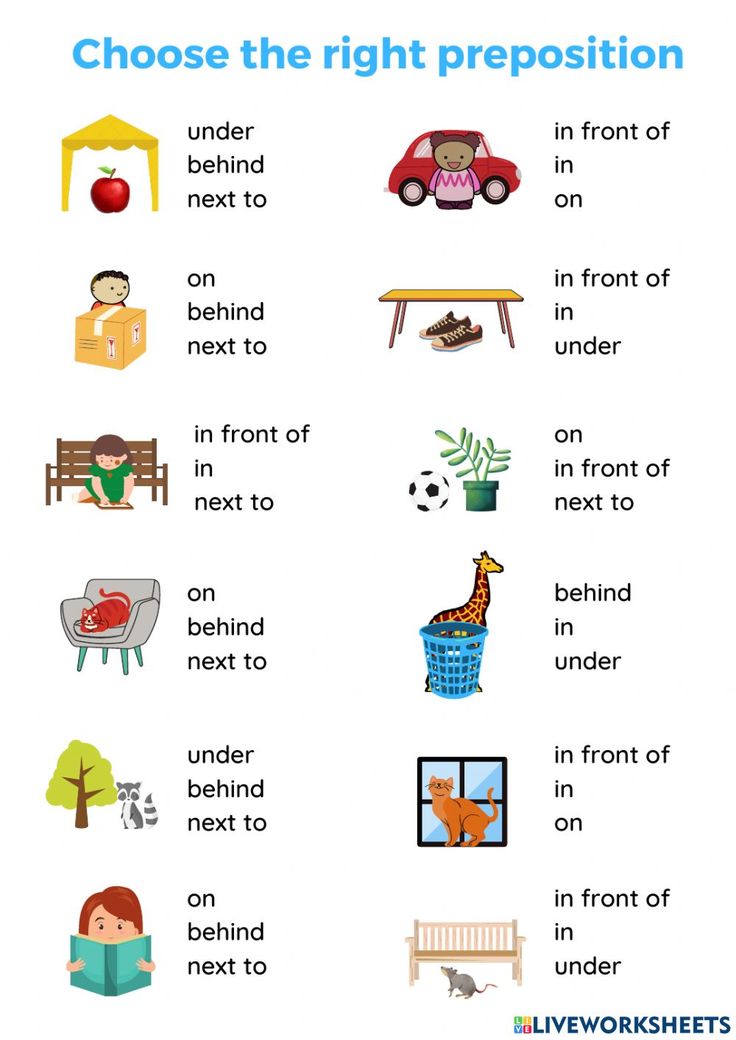 )
) - Have one half of the class form a circle with everyone facing out. This is the inside circle. Give each one of these students one of the cards containing a date, time, month, etc.
- Have the second half of the class form another circle around the inside circle, with everyone facing in. This is the outside circle.
- Tell students, “Those of you in the inside circle have a card with a time, date, day of the week, or something similar on it. You are also facing one person. Your task is to ask the person facing you a question using the time on your card and the appropriate preposition.”
- Provide some examples, such as:
- Can you come to my house on Wednesday?
- Are you going to travel in June?
- Did you eat breakfast at 7:30?
- Say, “Those of you in the outside circle must answer the question you are asked. You must include the time and the preposition.” Give examples, such as:
- Yes, I can come to your house on Wednesday.

- No, I am not going to travel in June. I am going to travel in July.
- I did not eat breakfast at 7:30. I ate breakfast at 6:30.
- Tell students they will have thirty seconds to complete the task (asking and answering questions) before the inside circle moves. After thirty seconds, the inside circle should shift one person to the right so that everyone has a new partner. The outside circle does not move.
- When everyone has a new partner, students in the inside circle should ask their new partner a question using what is written on their card and the appropriate preposition. New partners should answer and then the inside circle shifts again.
- Once everyone in the inside circle has had a chance to speak to all of the students in the outside circle, the roles should change. Collect cards from the inside circle. Distribute new cards to the outside circle and inform those students that they will now ask the questions and the inside circle will provide answers.
 The procedures for moving should remain the same.
The procedures for moving should remain the same.
During this activity, partners can provide feedback and corrections about how to use the prepositions if necessary. The circle can be repeated multiple times using different cards.
Format: Text
This week’s Teacher’s Corner presents two activities using the prepositions for, while, during, and since. In these activities, students practice correctly using the prepositions for, while, during, and since to talk about time. In Activity One, students complete sentence frames to write about events using the prepositions. In Activity Two, students listen to sentences that are missing prepositions and move around the room to indicate the correct preposition to complete the sentence. Students should have some knowledge of how these prepositions are used before participating in these activities.
Level
Intermediate and above
Language Focus
Speaking, listening, reading, and writing
Goals
During these activities, students will:
- Ask questions to collect information about a partner
- Use the information collected to complete sentences containing prepositions for, while, during, and since
- Present information about a partner to the class
- Listen to sentences and determine which preposition to use: for, while, during, or since
Materials
- Chalkboard or whiteboard with chalk or markers
- Paper and pencils for students
- Four large pieces of paper
- Markers
- Tape
- Scissors
Preparation
- Keep the following sentence frames ready to write on the board:
- (Name) has __________ since __________.
 (specific day/date/time)
(specific day/date/time) - (Name) has been __________ for ___________. (amount of time)
- (Name) likes to _________ while he/she __________. (two things at the same time)
- (Name) would never __________ during __________. (noun that is an event or time)
- (Name) has __________ since __________.
- Write one preposition (for, while, during, since) on each of the large pieces of paper and post them in four different areas of the room
Activity One: Interview
- Explain to students that they will write sentences about a partner using the prepositions for, since, while, and during.
- Write the first sentence frame on the board and provide an example sentence, such as Mr. Ali has been teaching since 1996 or Alex has been a goalie since June 27th.
- Ask students what questions they could ask their partner to elicit the information to complete the sentence. Examples include What is something you have been doing for a long time? When did you start? Elicit other questions from students.
 Write their ideas on the board under the sentence frame.
Write their ideas on the board under the sentence frame. - Repeat this process with the remaining sentence frames until students have a good idea about what questions they will ask their partner in order to elicit the information they need.
- Ask students to find a partner to interview, or assign pairs to work together. Tell students to write the sentences on separate lines with some space between each one.
- Give the class time to complete their interviews and complete the sentences before having each set of partners present the information to the class.
Activity Two: Four Corners
- Have students cross out the prepositions in the sentences they wrote about their partner in Activity One. They do not have to be completely crossed out, but just enough to remind someone reading the sentence to skip saying the preposition.
- Once the words since, while, for, and during have been crossed out, have students cut their paper into strips so that there is one sentence on each strip.
 Tell them to fold up each of the strips. Collect all of the sentences and put them into a box or container.
Tell them to fold up each of the strips. Collect all of the sentences and put them into a box or container. - Tell students you will play four corners with the prepositions since, while, for, and during. Point out the words you have posted around the classroom. Explain that you will read aloud a sentence with the preposition missing and students must move to a corner to indicate the correct word to complete the sentence.
- Divide the class into two equal teams and give each a name. Write the team names on the board. Emphasize that students must remember their team in order for the game to work. If necessary, help students remember by giving everyone on one team the same color dot on their hand with a marker. Explain that each team will earn points based on the number of people that are in the correct corner after the sentence is read.
- Choose one of the folded sentences from the container to read aloud. Do not read the preposition in the sentence, which will be crossed out as a reminder.
 Students must move to one corner of the room to indicate the correct preposition to fill in the blank in the sentence. Give students about ten seconds to make a choice and say “Stop!” to indicate that time is up. Anyone that is not in a corner must sit down in the middle of the room, but can join in again for the next round.
Students must move to one corner of the room to indicate the correct preposition to fill in the blank in the sentence. Give students about ten seconds to make a choice and say “Stop!” to indicate that time is up. Anyone that is not in a corner must sit down in the middle of the room, but can join in again for the next round. - Read the same sentence again, omitting the preposition. Ask a student from each corner to justify the preposition they chose before you reveal the correct one to complete the sentence. Review why the preposition is correct if needed.
- Before moving on to a new sentence, record points by counting how many of each team’s members are in the correct corner. You can make this easier by asking members of each team to raise their hands. Write the number under each team’s name on the board.
- Follow the same procedure for the next sentence. Continue adding to the points until all of the sentences are used. The team with the most points at the end of the game wins!
Format: Text
This week’s Teacher’s Corner introduces two activities during which students use prepositions of movement.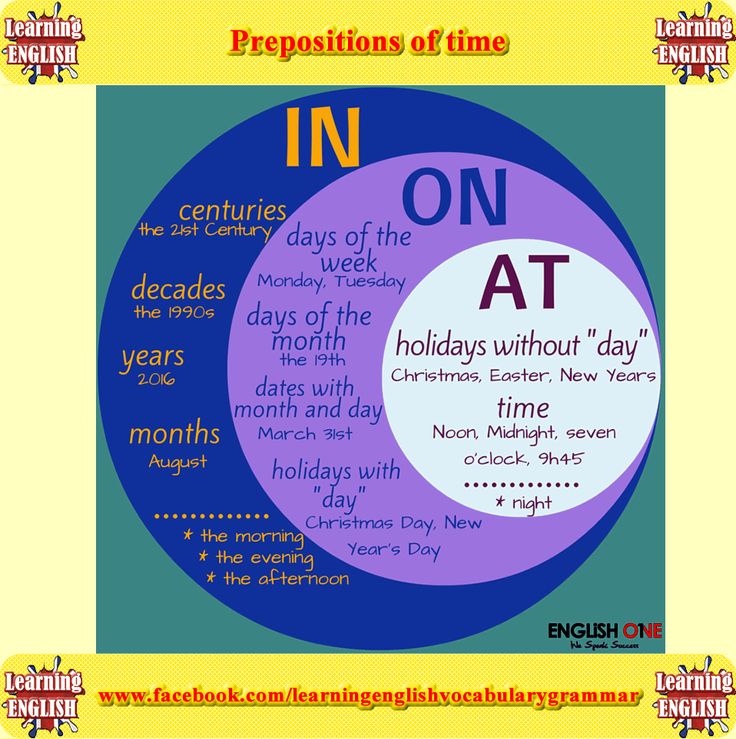 In these activities, students must use prepositions of movement to write a set of directions for others to follow. Activity One leads students from the classroom to a new location in the school. Activity Two has students create a map of a city and write directions for classmates to follow in order to discover buried treasure.
In these activities, students must use prepositions of movement to write a set of directions for others to follow. Activity One leads students from the classroom to a new location in the school. Activity Two has students create a map of a city and write directions for classmates to follow in order to discover buried treasure.
Level
Intermediate and above
LANGUAGE FOCUS
Speaking, listening, reading, and writing
Goals
During these activities, students will:
- Discuss ways to give directions with group members
- Write imperative sentences containing prepositions of movement
- Read and comprehend directions containing prepositions of movement
Materials
- List of prepositions of movement: across, along, around, away from, back to, down, into, off, onto, out of, over, past, round, through, to, towards, under, up
- List of locations in the school (gym, cafeteria, library, courtyard, office, other classrooms, etc.
 )
) - Pencils and paper/notebooks for students
- Poster paper/large paper
- Markers
- A small reward that can be shared by about 15 students, such as candy, stickers, or individual homework passes
Activity One: School Clues
Note: This activity requires students to move around the school in small groups. If this is not possible, the activity can focus on directions between locations within the classroom or a confined area such as a playground or courtyard. Alternatively, students can write directions from memory and then groups can try to follow them at a time when movement around the school is permitted.
- List the prepositions of movement on the board and have students copy them into their notebooks.
- Tell students they will work in groups of three. Using the prepositions, students will write a set of directions from the classroom to a different location in the school. After all groups have finished writing their directions, they will trade papers and try to follow each other’s directions to determine the end location.

- Model by choosing a place in the school, such as the office. Using the prepositions, give an example of the first steps one would include in a set of directions to the office, such as, “Walk out of the classroom. Go across the courtyard.” Ask students to continue by giving two more steps for the directions.
- Divide students into groups. Have each group select one student to be the recorder. Tell the recorder to write the names of everyone in their group at the top left side of the paper. The recorder will also write down the group’s directions.
- Assign each group a location in the school. This must be kept secret from the other groups. Each group moves around the school and works together to use as many prepositions as possible to write directions from the classroom to the new location. To keep the activity organized, assign students a time to return to the classroom with their completed set of directions.
- When students return to the classroom with their directions, have groups exchange papers.
 Tell the recorder to write the names of everyone in the group that will follow the directions at the top right side of the paper.
Tell the recorder to write the names of everyone in the group that will follow the directions at the top right side of the paper. - Tell students that they must now follow the set of directions they have in order to arrive at a new location in the school. Once they figure out where the directions lead, they should write the location down on the paper and return to class.
- Once all of the students have come back to the classroom, have each group return the set of directions they followed to the group that wrote them to verify that everyone ended up at the correct destination. If there are any discrepancies, review the set of directions with the class to determine any mistakes.
- This activity can be repeated with different groups or new destinations. As an extension, have students write directions back to the classroom once they have arrived at the initial destination.
Activity Two: Find it on the map
- Divide the class into groups of four or five students.

- Tell students that they will work in their groups to draw a map of part of a fictional town/city. They should include street names and major landmarks.
- Ask students for ideas about what they can draw on their maps. Ideas include: parks, schools, libraries, stores, markets, police stations, post offices, bodies of water, etc.
- After completing the map, each group should choose six locations where they would hide treasure in the city and write them down on a separate sheet of paper. These should be kept secret.
- Next, the group needs to write a set of six “clues” that use prepositions to give directions to each of the locations where the treasure is located. A person unfamiliar with their map should be able to follow the directions to determine each of the locations. The clues should be written on a clean sheet of paper. Here is an example:
a. Start at the primary school. Walk north along Orange Street to Green Road.
b. Turn right on green road and go around the park.
Turn right on green road and go around the park.
c. Walk under the bridge. Where are you?
- Tell students that once they are finished, they should fold their map in half with the sheet of clues inside. They will trade maps and “clues” with another group. Groups must not open the maps until you tell them to do so.
- Explain that groups will compete to be the first to correctly determine all six places where treasure is buried on the map. Tell students that as they solve each “clue” they should write down the location so that the group who created the map can verify the answers.
- When you say, “Go!” groups should open the map and begin. As students solve the clues, take note of the order in which the groups finish so that you can determine the fastest two or three groups. The students in winning groups can earn a small reward (see Materials for suggestions) if their answers are also correct.
- To repeat this activity, students can exchange maps and clues with another new group.

Format: Text
This week’s Teacher’s Corner features two activities to help students practice prepositions of place. These activities allow you to use everyday objects to teach and reinforce the meaning of prepositions of place for your students. During the Introduction, students create a vocabulary document with sketches to show what each preposition means. In Activity One, teams compete to arrange objects correctly according to instructions with prepositions. In Activity Two, students race against the clock to write sentences using new prepositions.
Level
High beginner and above
LANGUAGE FOCUS
Speaking, reading, and writing
Goals
During these activities, students will:
- Learn common prepositions of location using real life objects
- Read prepositions of location
- Form oral and written sentences using prepositions to describe the location of objects
Materials
- Chalkboard or whiteboard with chalk or markers
- Table
- A group of ten everyday objects, familiar to students, that can be easily displayed and arranged on a table (for example: books, pencils, notebooks, markers, pieces of fruit, a mobile phone, a hat, gloves, a scarf, a coffee mug, etc.
 )
) - Index cards
- Markers
- Two grab bags or containers to hold folded up index cards
- Paper and pencils for students
- List of prepositions: above, around, behind, below, beside, between, far (away) from, in, in back of, in front of, in the middle of, inside, near, next to, on, on top of, outside, under
- Timer or clock
Preparation
- Collect the objects you plan to use for the activity. Place them in a group on a table or desk where all students can easily see them.
- Label one of the containers objects and the other prepositions.
- Write the name of each object on an index card and fold it in half. Put the folded cards in the container labeled objects.
- Write each preposition of location on an index card.
 Fold the cards in half and put them in the container labeled prepositions.
Fold the cards in half and put them in the container labeled prepositions.
- Explain to students that the upcoming activities will focus on prepositions of location. Tell students that these words tell where something is located in relation to another object.
- Tell the class that you will teach the prepositions using the objects on the table to show what each one means. Students can write down the new prepositions and sentences and sketch the objects to help them remember the definitions.
- Start with the word beside. Write the word on the board and have students repeat it. Choose two objects and put them next to each other on the table. Then, form a sentence about the objects using beside, such as “The apple is beside the notebook.”
- Choose different objects to display on the table. Ask students to form sentences about them using the new preposition.
- Continue teaching the prepositions in this manner until you have presented each one and given students a chance to practice using the words.
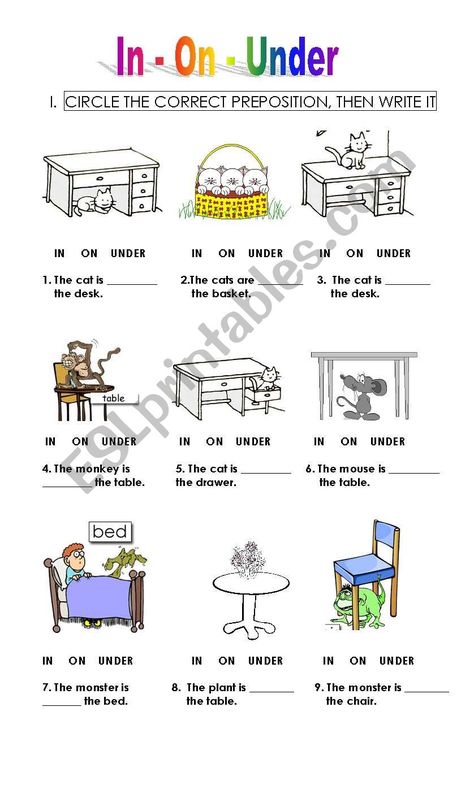
Activity One: Arrange the Objects
- Once students are comfortable with the prepositions, inform them that they will play a game to test their understanding. Divide the students into two or three teams and give each team a name.
- Show students the two containers you have prepared and say, “This container has all of the names of the objects that are on the table. This container has all of the prepositions you have just learned. Two members of your team will come up to the front of the class together. One person will choose a preposition card and the other will choose two object cards. Then you will work together to arrange the objects to illustrate the preposition and use it in a sentence about the objects. Your team will earn one point for correct arrangement of the objects and one point for your sentence.”
- Choose two students to come up to the front of the class and model the process of choosing the cards, arranging the objects, and forming a sentence.
 Provide guidance as needed and give students time to ask questions about the game.
Provide guidance as needed and give students time to ask questions about the game. - Once students are ready, play the game and keep score. The activity can either be timed, or played until all students have had a chance to participate. The team with the most points at the end of the activity wins!
Activity Two: Describe the Scene
- Have the class form pairs or small groups of 3-4 students.
- Rearrange the objects on the table if you have just played the game in Activity 1. On the board, list the prepositions you want students to use.
- Explain that you will set a timer for five minutes. During the five minutes, groups of students should try to write as many sentences as they can about the objects on the table using each of the prepositions on the list. They must use all of the prepositions once before repeating any.
- After the timer has stopped, groups will exchange papers and check each other’s sentences. Students will check for correct use of prepositions and verify that the sentences correctly describe the location of the objects on the table.
 Groups earn one point for each correct sentence.
Groups earn one point for each correct sentence.
Once the sentences have been checked and points have been added up, the group with the most points wins. You can ask groups to share some of their sentences to provide further review. To repeat this activity, rearrange the objects on the table and have students work in different groups.
Format: Text
Prepositions in English, rules and usage
Let's help you speak English without hesitation
Start learning
161.4K
It's hard to believe, but prepositions in English work wonders: if you accidentally mix it up, the meaning will change dramatically. For the interlocutor to understand you correctly, read this article.
Basic concepts: what is a preposition
The preposition is a part of speech that shows the relation of a pronoun or noun to other words in a sentence. This relationship can be spatial, temporal, causal, or express the direction of movement.
This relationship can be spatial, temporal, causal, or express the direction of movement.
Analogue in Russian - case.
Since a preposition is a service part of speech, it cannot be used independently and change its wording.
It will take a lot of time and practice to memorize a large number of prepositions, so now we will concentrate on the main prepositions in English and understand how they are divided into groups. At any time, you can refer to the tablets and choose the appropriate preposition in meaning.
The difference between Russian and English prepositions in that they are fundamentally different, it is difficult to compare them. A common mistake of non-native speakers is the translation from English into the "Russian way", that is, literally.
You need to learn to look at the English speech more voluminously, to form observation, then it will be easier to understand the inherent meaning and deftly formulate sentences. Here are examples of non-obvious translations:
Here are examples of non-obvious translations:
- The red parrot is in the tree. - A red parrot in a tree (not inside).
- There are tired people in the picture. - Tired people in the photo (I really want to say on the picture).
- I'm at a music festival. — I'm at a music festival (again, not on ).
- I traveled to India. - I traveled around India (the preposition in is often mistakenly used).
English prepositions are divided into simple (simple), derivatives (derived), compound (compound) and compound or phrasal (composite/phrasal).
A simple form of is most of the English prepositions:
- at - at, near, in, on;
- in - in, on, behind, through;
- about - about, around, at, by;
- against - against, face to, on;
- before - before, before, before.
Derivatives are formed from other parts of speech:
- concerning - regarding, relatively;
- including - including, including;
- depending
- granted - provided that.
Complex consist of several components:
- alongside - near, near, at;
- outside - outside, outside, except for;
- within - within, within, no further;
- wherewith - than, through which.

Compound or phrasal is a phrase when there is a word from another part of speech and one or two prepositions:
- because of
- instead of - instead;
- by virtue of - in force, on the basis;
- for the sake of - for the sake of;
- with regard to - relatively, in relation to.
We have a great article on the topic - word order in an English sentence!
Useful gifts for parents
There are guaranteed prizes in the wheel of fortune that will help improve the learning process and build relationships with your child!
Types of English prepositions
There are five large groups of prepositions:
- Prepositions of time.
- Prepositions of place.
- Prepositions of direction.

- Prepositions of reason.
- Movements (preposition of movement).
The lexical meaning of each group directly depends on what position the preposition occupies in the sentence, so there can often be two or even more interpretations. Let's take a look at each group.
How many English words do you already know?
Let's define your vocabulary - without complex questions and with the help of smart algorithms.
Prepositions of time
Prepositions of time show when and what time something happened, is happening or will happen. Test question: When?
| Preposition | Translation | Use | Example |
| after | after | When something happened after something or right after someone did something. | You should relax after massage. You should relax after the massage. |
| at | at, during | When talking about hours, certain moments of the day, weekends and holidays. | He will come at 8 o'clock. He will come at 8 o'clock. |
| by | to, no later than | When something happens before or no later than a certain moment. | I need this book by next Monday. I need this book by next Monday. |
| to | during, during, for | When we talk about months, time of day, years, seasons. | We met each other in 2018. We met each other in 2018. |
| on | at, during | When talking about dates, days of the week or special days. | We arrive on the 2d of December. We will arrive on the 2nd of December. |
| before | before, before | When something happened before a specific action or event. | I will try to return home before 8. I will try to get home before eight. |
| during | during, during | When an action or situation lasted from and to a certain period. | They were walking during the day. They walked all day long. |
| from | from, from, from | When something happened from and to a certain period of time. | This cafe works from seven to four. This cafe is open from seven to four. |
| for | within | When we say how long an action or situation lasts. | She was cooking dinner for an hour and half. She cooked dinner for an hour and a half. |
| since | s , since | When something is happening or has happened in the past since a certain moment. | I know him since school. I know him from school. |
| until | before, not before | We use this word when something happens up to a certain time, and then stops. | We should wait until the end of working time. We should wait until the end of the working day. |
| within | within, within | When an action must be completed before a certain moment occurs. The limitation of the period is important. | I will reply within five working days. I will respond within five business days. |
| Preposition | Translation | Use | Example |
| above | above, above | When someone is in a position higher or something is located in a position higher than another. | The bats are flying above heads. Bats fly overhead. |
| in front of | front, opposite | When something or someone is in front or face to face. | He stood in front of the store. He stood in front of the store. |
| outside | outside | When something or someone is not inside, but close to something. | Friends waited us outside . Friends were waiting for us outside. |
| behind | behind, behind | When something or someone is behind. | She parked behind me. She parked behind me. |
| below | below, below | When something is on a lower level. | There is a river below the bridge. There is a river under the bridge. |
| between | between | When an object or person is between some objects. | There is a child between two adults. The baby is between two adults. |
| under | under | When someone or something is on a lower level or covered by something. | He is under 18. He is under 18 years old. |
| by | near, near, near | When someone or something is very close to something. | He is running by the alley. He runs along the alley. |
| at | at, at | When someone is at an event, meeting, at home - where it is difficult to draw clear boundaries | They are at home now. They are at home now. |
| to | to
to | When someone or something is inside something.
When someone or something is in pictures | I put the phone in a bag. I put my phone in my bag.
There are tired people in the picture. Tired people in the photo |
| on | to | When someone or something is on the surface of something. | There is a glass on the table. There is a glass on the table. |
Prepositions of direction
Prepositions of direction show the direction of movement of a person or object. Test question: "Where?"
| Preposition | Translation | Use | Example |
| into | to | When someone or something wants to get inside, go somewhere. | She came into the castle. She entered the castle. |
| through | through, through | When there is movement from one side to the other. | He will ride through the swamp. He will drive through the swamp. |
| to | to | When there is movement towards something. | I'm going to the theatre. I'm going to the theatre. |
| to | up | When there is a movement from low to high. | We are running up the hill. We are running up the hill. |
| down | down | When moving from high to low. | We ride down the hill. We are going down the hill. |
| along | lengthwise, by | When there is a movement in the direction of a certain length. | This handsome man walks along the avenue. This charismatic man walks along the avenue. |
| across | through | When there is movement from one to another. | He walked across the road. He walked across the road. |
| round/around | around | When there is movement in a circle. | They run around the school. They run around the school. |
| out (of) | out of | When there is movement from the inside out. | Tom went out of the house. Tom left the house. |
| back to | back to | When there is movement in the opposite direction. | After a month of living in other city I decided to go back to my home. After a month of living in another city, I decided to return to my home. |
| towards | towards | When there is movement towards something. | I ride towards the rice field. I am driving towards the rice fields. |
Prepositions of reason
Prepositions of reason show why or why something happened. Test question: Why?
| Preposition | Translation | Use | Example |
| because of | because, due to | When something happens or causes something. | He missed the meeting because of a traffic jam. He missed the meeting due to a traffic jam. |
| thanks to | thanks to, due to | When something positive happened because of someone or something. | I have valuable experience thanks to this job. I have valuable experience through this job. |
| due to | due to, thanks to | When something negative happened because of someone or something. Mostly in official situations. | I got sick due to changeable weather Because of the changeable weather, I got sick. |
| through | thanks, due to | When something happens because of something. | I missed the party because of a headache. I missed the party because of a headache. |
| from | to, from | When there is a thought about something or a belief in something, or to indicate a reason. | I guessed from his behavior that he is military. I guessed from his behavior that he was a military man. |
| of | from, due to, to | When the reason why something happened is important. | Loud noise is the cause of the conflict. A loud noise caused a conflict. |
| for | for, for, due to | When we do something for a specific purpose or when something happens as a result of something. | I have made him a present for his anniversary. I gave him a birthday present. |
| in accordance with | according to, according to | When something happens according to a rule or law. | In accordance with my life rules I never lie. In accordance with my life principles, I never lie. |
| on account of | due to, due to | When something happened because of something and caused difficulties. | We couldn't draw on account of broken pencil. We couldn't draw because of a broken pencil. |
Rules for using prepositions
Prepositions can radically change the meaning of verbs, inflect nouns according to cases, move objects in space, indicate their location, and much more. The correct use of prepositions in English will help to avoid awkward pauses in the dialogue, make speech interesting and varied.
Let's look at the example of modal verbs, how the meaning of one word can change
- look for - look for;
- look upon - have an opinion;
- look after - take care;
- look over - forgive;
- look to - follow.

Rules for placing a preposition in a sentence
1. Before a noun or pronoun.
- Put the glass on the table. - Put the glass on the table.
- Give the book to Tom. Give this book to Tom.
2. At the end of interrogative sentences.
- Where do you live in? - Where do you live?
- Who are you waiting for? - Who are you waiting for?
3. At the end of a subordinate clause or passive construction.
- Apartment repair is what they wanted to begin with. They would like to start by renovating the apartment.
- You know who he is worried about. You know what he's worried about.
Prepositions can be part of set expressions that can be learned and used as needed. The verb table contains the most common ones and can be downloaded, printed and used as a bookmark.
The verb table contains the most common ones and can be downloaded, printed and used as a bookmark.
How to memorize prepositions
Here are some recommendations for memorizing prepositions:
- When you come across a previously unknown verb in the text, look it up in the dictionary and fix for yourself at least two usages with different prepositions.
- It's great to study prepositions in context. Record the phrases you like.
- Pictures can be used to better remember prepositions of place.
- Practice! If you see a cool expression with a new preposition, figure out how to quickly use it in speech: write a message to a foreign friend or a couple of lines in notes, sing a funny song, or use it in a conversation with a teacher.
Check if you remember English prepositions well
Cheat sheets for parents in English
All Formulas in English at hand
Lidia Kazantseva
author Skysmart
to the previous article
The calculated and non -readable nouns in English
,for the next article
49. 7K
7K
Sounds. English
Get a development plan in English at a free introductory lesson
PremiumAt an introductory lesson with a tutor
-
We will determine the level and give advice on training
-
We will tell you how the classes go
-
We will select the course
My company - Studying prepositions
The site was created on the Nethouse platform. Do you want the same?
Play with your child learning prepositions.
Look at the pictures, ask where the chicken is hiding. Read the sentences and pay attention to which preposition is used.
Read the poem and discuss it, name together with the child all the prepositions that are used in it.
Make up some sentences with the preposition being studied.
I wish you a good time together!
The chicken is sitting on the letter
The hare has climbed on the stump since morning.
Take a look, kids!
He dances all day,
Perched on an old stump.
The chicken walks through the letters.
A cat walks along the railing.
I watch her through the window.
He puts his paws on the railing
In snow-white soft slippers.
The chicken sits in the letter.
The parrot sat on a branch,
Not on a tree, but in a cage.
He came from Africa
For the children to have fun.
The chicken hid behind the letters.
A puppy is running after a cat,
He is running at full speed.
The cat stole a fish from the kitchen.
Would you be able to resist?
The chicken hid under the bench.
A mouse was sitting under the fungus.
This is the house I found.
She sheltered from the rain in it,
Though temporary, but a house.
The chick jumps off the letter.
The cat flew off the sofa with a bullet.
He heard that grandfather
He brought fish to the house from fishing.
Would you be able to sit?
Chicken peeking out of the box.
The dog looked sadly out of the booth,
And she didn't care about the robbers.
The owner punished the dog yesterday,
That she serves ugly, he said.
The chicken flies over the letters.
The tit is hovering over the nest.
The whole day he fights with the chicks.
She would like to sit on a branch,
But the children squeak all the time!
Chicken stuck between letters.
A swing between palm trees
Hanging somewhere in Africa.
Tell me, would you like to
Sit on such a swing?
The chicken flies over the letters.
Chicken through the fence
Flew to our yard.
She escaped from the fox
And she stayed with us.
A chicken stands next to the letters.
The dog was sitting near the booth,
Looking around with tension.
She looked at what was growing in the garden.
I was in business. Well, it worked, sort of.
The chicken stands in front of the letters.
Two fox cubs in front of the mink,
Two fox babies.
Toddlers play ball,
Have fun from the heart.
The chicken peeks out from behind the letters.
A squirrel looks out from behind the tree.
Do you know her tricks?
Lots of strong mushrooms
Among the spruce knots.
A chicken crawls out from under the letters.
The cat decided to try on a hat.
Nose and paws from under the hat.
This hat is big!
Visible to everyone from afar.
I propose to pick up the ball and play with it a little, reinforcing the correct use of prepositions, performing the appropriate movements and pronouncing the text of the poem
FOCUSNICK
First roll the ball in your hands, knead, warm them up so that they are ready to work.
Dexterously playing with the ball
And calling prepositions.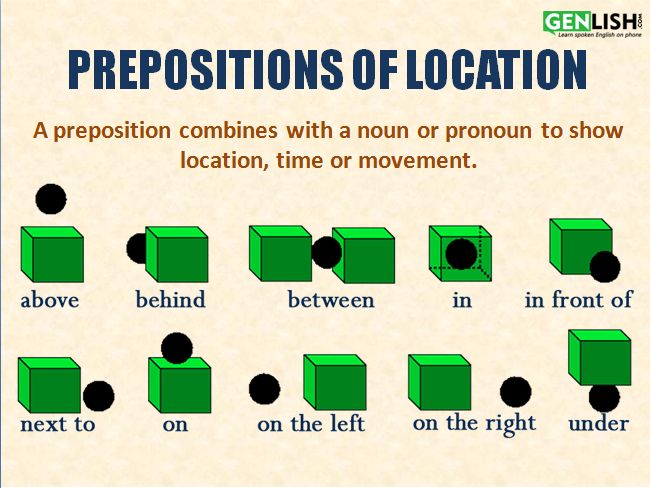
At hand and at hand,
From under the brush to rest.
The ball is circling over the hand,
Now it is running away from it.
I'll hold it between my fingers
And put it in my palm.
I'll get it out of my hand,
I'll put it on the right, on the left.
I’ll carry it in front of my chest,
I’ll hide it from behind, shake it.
From behind the back I will take out the ball,
It will jump at my feet.
I will hold it up, down,
I will carry past the nose
The ball is outside, the ball is inside.
I shake my hand - look!
Along the palm, through the finger
And dance around the wrist.
The ball is played with one hand
And runs over to the other.
The ball is friendly with my hand -
What a magician I am!
Further, you can fix the correct use of prepositions with the help of the game "Lotto".






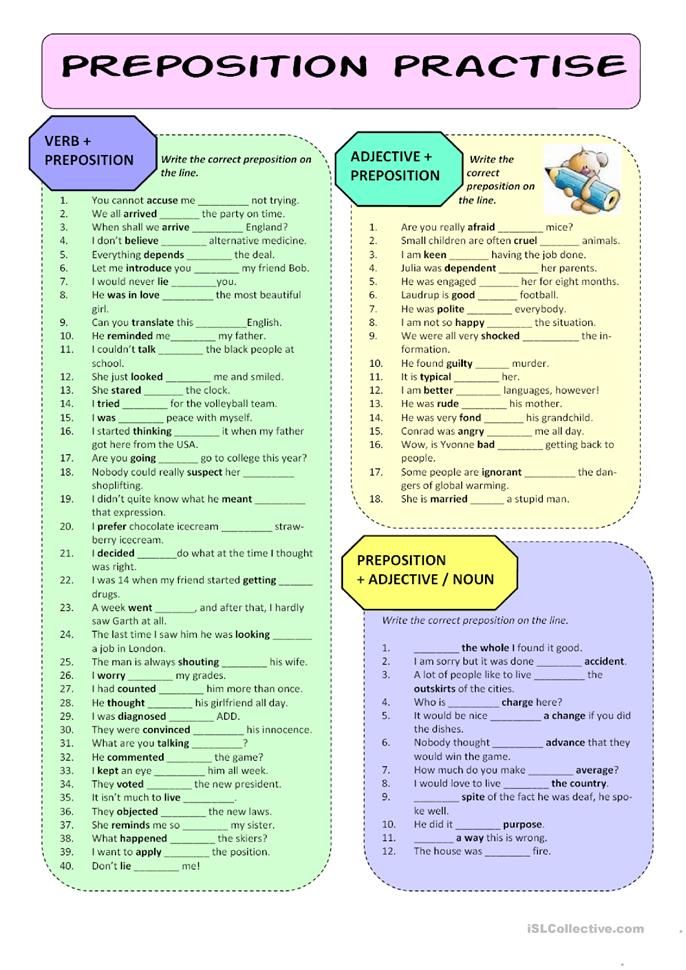

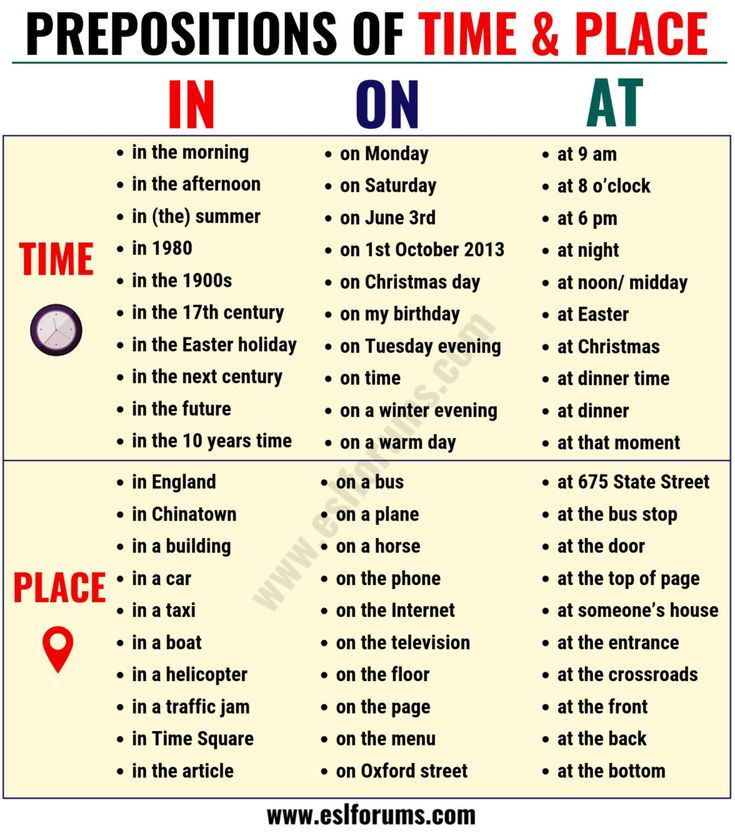

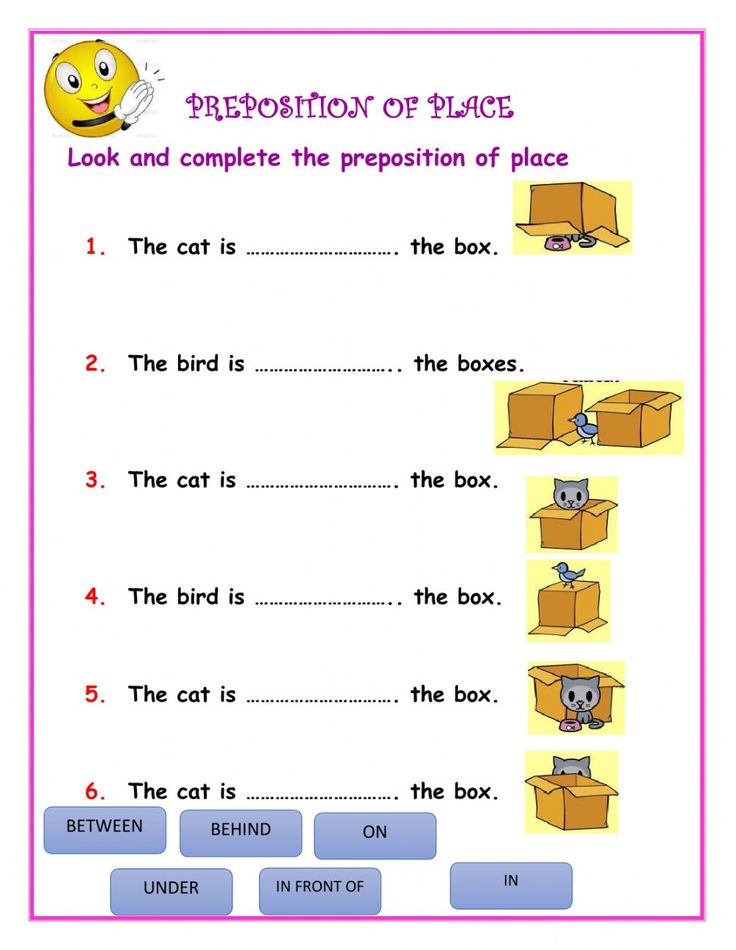

 Actively used in colloquial speech.
Actively used in colloquial speech. 


